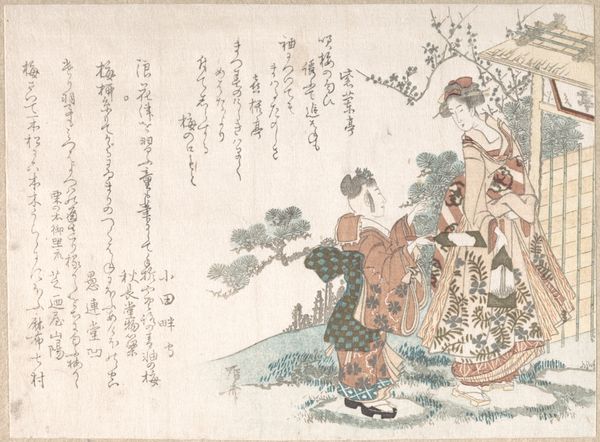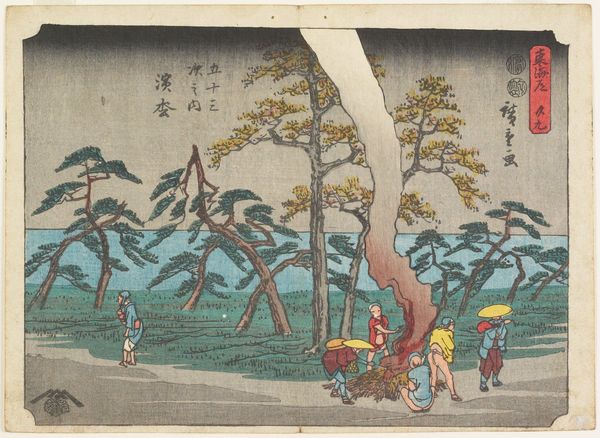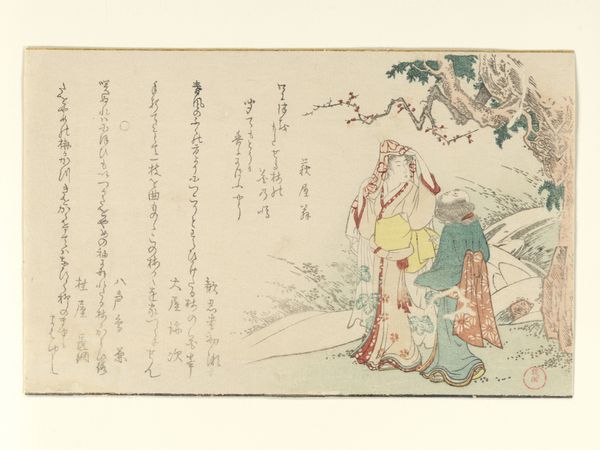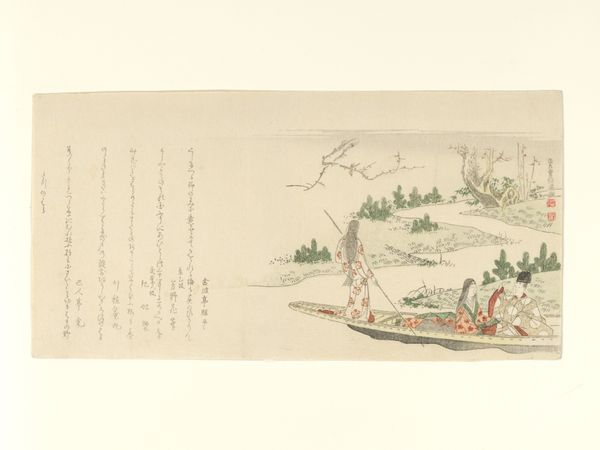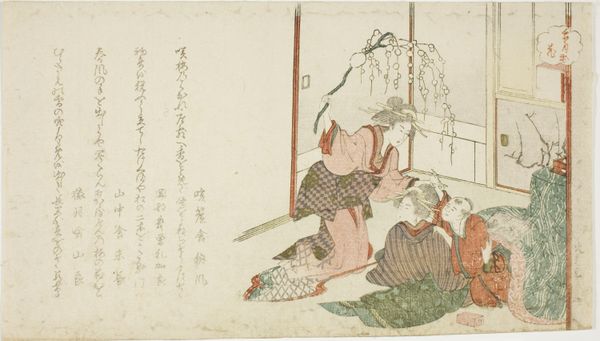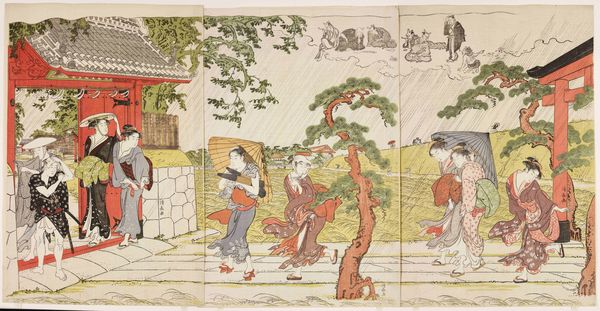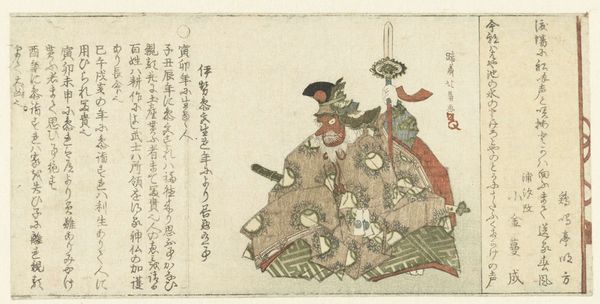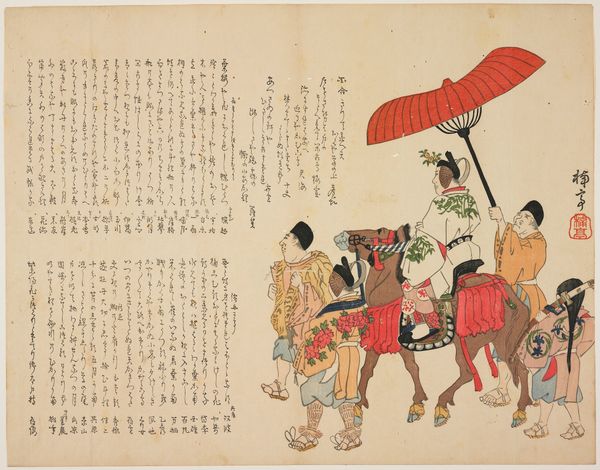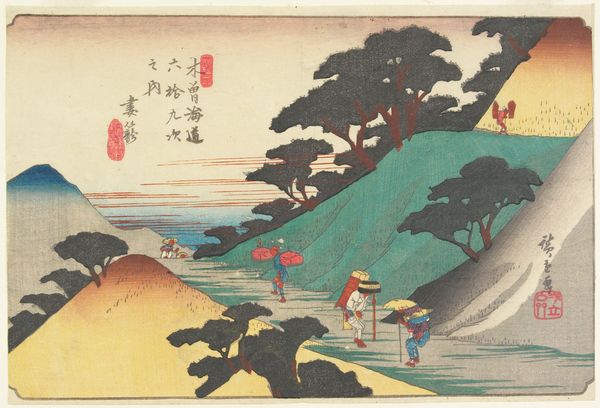
print, paper, ink, woodblock-print
#
narrative-art
# print
#
asian-art
#
landscape
#
ukiyo-e
#
japan
#
paper
#
personal sketchbook
#
ink
#
woodblock-print
#
genre-painting
Dimensions: 15 x 18 7/8 in. (38.1 x 47.9 cm) (image, sheet)
Copyright: Public Domain
Curator: Let’s take a look at "(Hunting party)", a woodblock print in ink and color on paper crafted circa 1818-1825 by Yano Yachō. It’s currently housed here at the Minneapolis Institute of Art. Editor: It has a pastoral feel, almost dreamlike, with that gentle color palette. I see a group of figures, presumably the hunting party, but they seem almost leisurely, contemplative. Curator: Genre scenes like this were quite popular in Ukiyo-e prints, offering glimpses into various aspects of Japanese life. Yano Yachō created it as part of an artistic movement during the Edo period. He likely targeted the rising merchant class with these relatable scenes of recreation and leisure enjoyed by different social classes. Editor: How interesting. I see that the figures appear to be purposefully depicted in procession against that expansive backdrop. It calls into question accessibility and privilege – are we meant to focus on the aesthetics of this leisurely outing, or something else? Is it also possible the people in this party held higher status positions and were of high importance in their society? Curator: The politics of imagery within Ukiyo-e are complex. Works like this are often viewed as relatively benign records of daily life. However, by highlighting such scenes, it reinforced social hierarchies, even while making art accessible to a broader audience. Editor: I appreciate how this piece allows us to think about who is represented and who is not in visual culture, and how such depictions reinforce or subvert power structures. Even what appears at first glance to be mere aesthetic delight can carry significant weight. Curator: Precisely. And considering this through the lens of contemporary socio-political theory, we must also look at class dynamics of the time, who enjoyed access to this style of living, and how it all interplayed into the production and consumption of artwork. Editor: Indeed, approaching the history behind this artwork critically, acknowledging its cultural context as well as the underlying messages, ultimately helps in considering its continued relevance today. Curator: Absolutely, prompting discussion allows the audience to create and further consider intersectional narratives, focusing on race, identity and even politics.
Comments
minneapolisinstituteofart about 2 years ago
⋮
Boating excursions helped alleviate the heat of summer in pre-modern Japan. A red lacquered sake cup seen behind the man fishing from the bow suggests that there may be more revelers (not in the print) in the stern. Nagaharu, who lived and worked in Osaka, designed several surimono for Osaka-based poetry groups. The inscription in the upper right corner explains that the print was published after Nagaharu's death. Kagen, who may have been Nagaharu's friend or pupil, added the flowers on the riverbank to the original design.
Join the conversation
Join millions of artists and users on Artera today and experience the ultimate creative platform.
